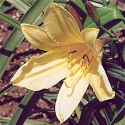
|
|
|
|
|
|

|
|
|
|
|
|
|
|
|
| (a complete list of Hemerocallis species and its details can be found at http://www.hemerocallis-species.com) |
| at 1900: | 4 cultivars |
| at 1910: | 46 cultivars |
| at 1920: | 66 cultivars |
| at 1930: | 128 cultivars |
| at 1940: | 577 cultivars |
| at 1950: | 3'284 cultivars |
| at 1960: | 8'624 cultivars |
| at 1970: | 15'527 cultivars |
| at 1980: | 22'827 cultivars |
| at 1990: | 33'114 cultivars |
| at 2000: | 48'354 cultivars |